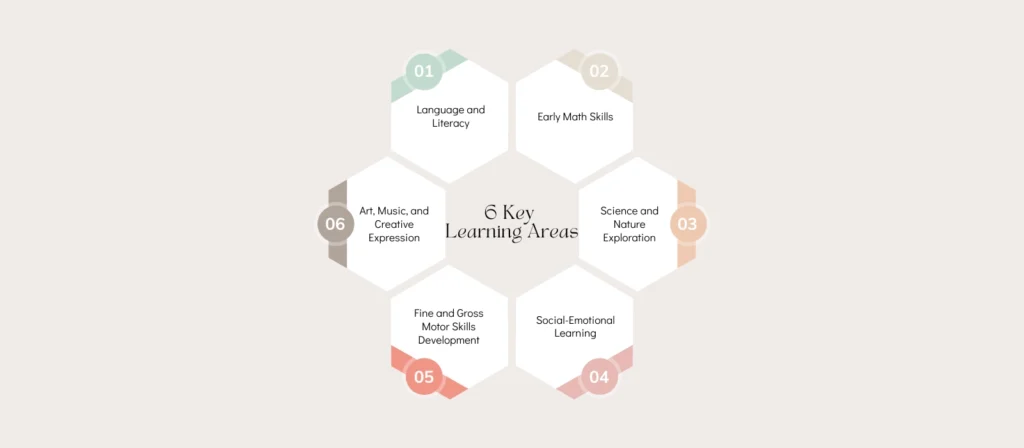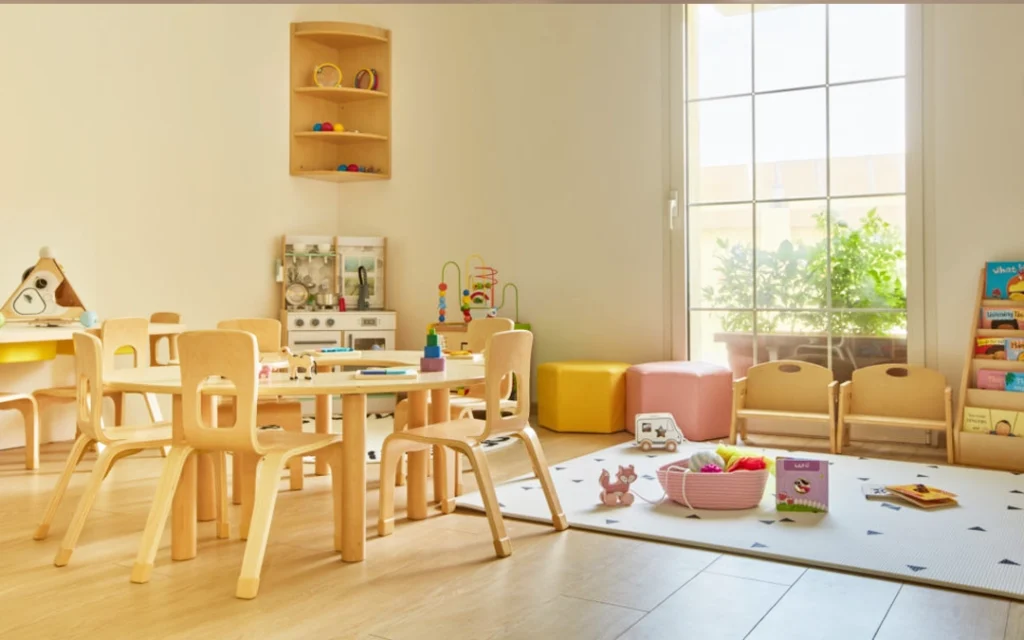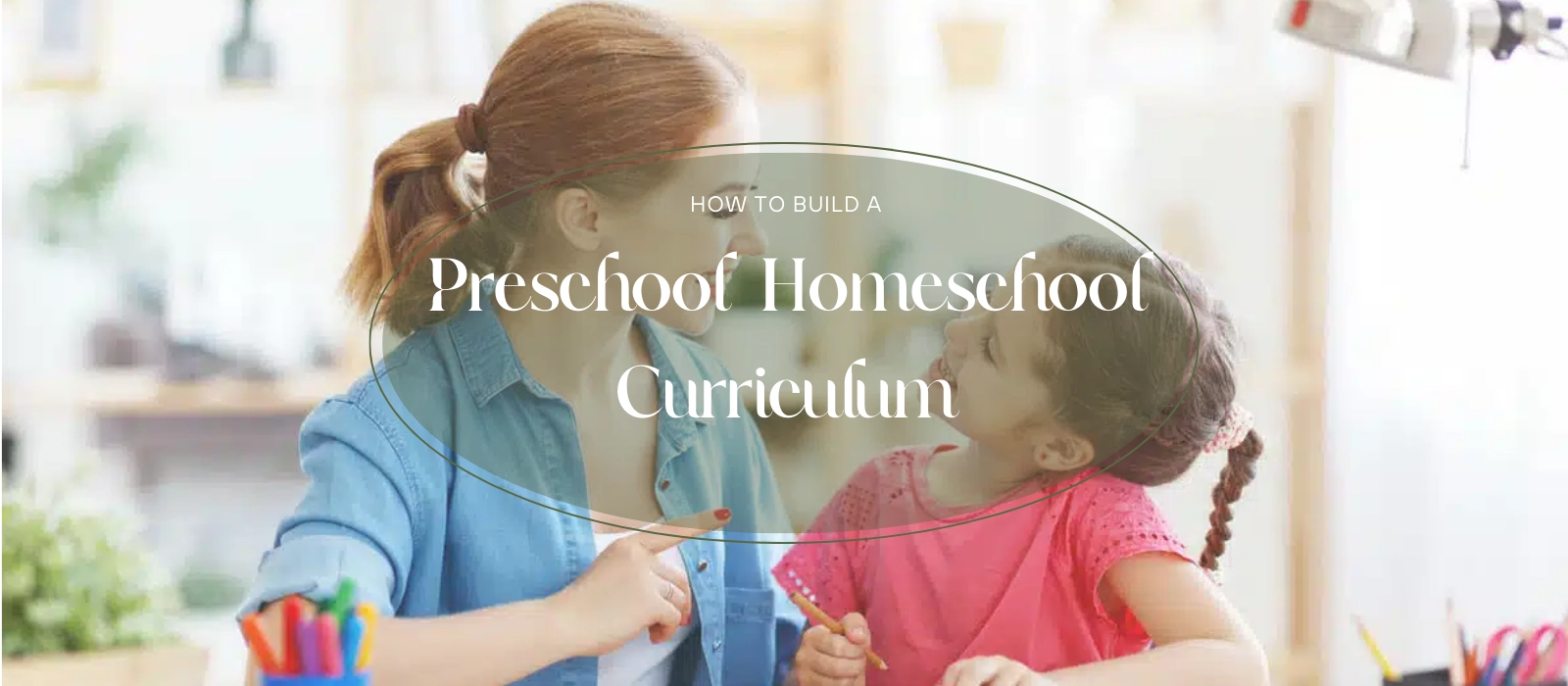Are you struggling to set up a structured, fun, and effective learning environment for your preschooler at home? Are you overwhelmed by the countless “preschool homeschool curriculum” options available online? Do you fear that without a solid plan, your child’s early learning may fall behind?
A solid homeschool preschool program can provide structure, support emotional and cognitive development, and lay the foundation for future academic success. Building a Preschool Homeschool Curriculum that truly works isn’t as complicated as it may seem. By following a simple, research-backed framework tailored to your child’s development and interests, you can create a curriculum that promotes growth, creativity, and a love for learning.
In this comprehensive guide, I will walk you through the step-by-step process of designing an effective Preschool Homeschool Curriculum. I’ll share expert insights, free resources, sample schedules, and practical tips to help you succeed. Whether you’re just beginning your homeschooling journey or refining your current plan, this article is packed with everything you need to confidently teach your preschooler at home.
Understanding What a Preschool Homeschool Curriculum Is

Definition and Purpose of a Preschool Homeschool Curriculum
Before diving into the structure and components of a preschool homeschool curriculum, it is crucial to understand what it truly means. A preschool homeschool curriculum is a carefully planned learning roadmap for children aged approximately 2 to 5 years, designed for a home setting rather than a traditional classroom. It blends early academic fundamentals with play-based learning to build a strong educational foundation.
Core Skills Targeted in Homeschool Preschool Programs
Homeschool preschool programs focus on developing critical skills such as language acquisition, early numeracy, social-emotional intelligence, and motor abilities. Unlike rigid school environments, homeschooling allows flexibility in teaching methods and pace, adapting to a child’s unique learning style. When parents or educators design a homeschool preschool curriculum, they aim to combine structured educational goals with the freedom for creativity and exploration.
Popular Styles of Homeschooling Preschoolers
There are many different styles within homeschooling preschoolers. Some families adopt a Montessori homeschool preschool method focusing on hands-on, child-led activities. Others prefer a Charlotte Mason approach emphasizing literature and nature. Christian homeschool curriculum for preschool options are also popular, integrating faith-based teachings.
Striking a Balance Between Academics and Play
In creating a curriculum preschool homeschool plan, it is vital to strike a balance between academic learning and playful discovery. Homeschooling a preschooler should never be about replicating a traditional classroom at home; it should celebrate the joy of learning in a nurturing and stimulating environment.
Finding the Right Resources for Your Preschool Homeschool
With the growing popularity of homeschooling preschoolers, many parents seek structured resources. Accredited preschool homeschool curriculum providers, Montessori preschool homeschool curriculum kits, and even free preschool homeschool curriculum packages are readily available online. It is important to carefully evaluate these materials to find ones that align with your educational goals and your child’s needs.
When setting up a homeschool preschool schedule, remember that young children learn best through consistent, short periods of focused activities interspersed with free play. Homeschool preschool schedules should be adaptable yet predictable, creating a comforting rhythm for little learners.
In the following sections, I will guide you through the essential learning areas to cover in a strong preschool homeschool program, sample daily routines, and resources you can use to build a curriculum that grows with your child.
Key Learning Areas Every Preschool Curriculum Must Cover
Choosing the right subjects and developmental areas is crucial when building a preschool homeschool curriculum. A balanced approach ensures your child gains academic, social, emotional, and physical skills necessary for long-term success.

Language and Literacy
Language development is the cornerstone of early childhood education. A strong homeschool preschool curriculum incorporates reading aloud sessions, vocabulary-building activities, phonics games, and storytelling. Homeschooling preschoolers with daily reading time fosters a love for books and prepares them for future academic achievements. Using free printable preschool homeschool curriculum worksheets for letter tracing and sight words can be highly effective.
Early Math Skills
Foundational math skills start with simple number recognition, counting, sorting, and pattern recognition. Homeschool preschool activities like counting objects, playing board games, and using math-focused toys make learning math fun and intuitive. Curriculum for homeschool preschool should include daily opportunities for hands-on math exploration.
Science and Nature Exploration
Science in a homeschool preschool schedule should be simple yet exciting. Nature walks, basic experiments, and learning about seasons, plants, and animals spark curiosity. A nature-based preschool homeschool curriculum helps preschoolers connect with the world around them and fosters critical thinking skills.
Social-Emotional Learning (SEL)
Social-emotional learning is vital even in a homeschool environment. Homeschool preschoolers benefit from role-playing activities, sharing tasks, and simple discussions about emotions. Programs that emphasize SEL help children build empathy, cooperation, and self-awareness, important traits for personal and academic success.
Fine and Gross Motor Skills Development
A complete preschool homeschool curriculum also emphasizes physical development. Fine motor skills are strengthened through activities like coloring, cutting, and bead threading. Gross motor skills are built through jumping, running, and dancing. Homeschooling preschoolers should incorporate plenty of movement-based games and free play.
Art, Music, and Creative Expression
Creativity is a core part of early education. Encourage open-ended art projects, singing, dancing, and pretend play. Homeschool preschool curriculum kits often include supplies for art activities. Creative expression supports cognitive and emotional development, making it a critical piece of a strong homeschool preschool program.
Building a curriculum that touches on each of these areas ensures your preschool homeschool program is comprehensive and nurturing. In the next section, we will look at the specific milestones your child should reach between the ages of three and five.
Age-Appropriate Milestones for Preschoolers (Ages 3–5)
Understanding developmental milestones helps in creating an effective preschool homeschool curriculum. Each age group from three to five has specific growth targets that should be gently encouraged through thoughtful planning.
Milestones for 3-Year-Olds
At three years old, children are rapidly developing basic skills across all domains. Key achievements include:
- Speaking in full sentences and expanding vocabulary.
- Engaging in pretend play and simple group activities.
- Recognizing basic shapes and colors.
- Developing fine motor skills like drawing simple shapes.
- Following two-step instructions.
Preschool homeschool curriculum for 3-year-olds should incorporate a lot of free play, hands-on activities, and basic pre-academic skills through songs, stories, and movement games.
Milestones for 4-Year-Olds
Four-year-olds show greater independence and curiosity. Important developmental goals include:
- Writing some letters and recognizing their own name.
- Counting up to 10 and understanding quantities.
- Asking many “why” questions showing curiosity.
- Showing better hand-eye coordination.
- Engaging in cooperative play with peers.
Homeschool preschool curriculum at this stage should encourage more structured learning sessions, story comprehension, and problem-solving activities.
Milestones for 5-Year-Olds
Five-year-olds are preparing for formal schooling. Essential skills include:
- Telling simple stories using complete sentences.
- Recognizing most letters and beginning to blend sounds.
- Counting beyond 20 and understanding basic addition.
- Showing self-control and understanding rules.
- Demonstrating improved physical coordination.
A strong preschool homeschooling curriculum for this age group includes early reading practice, introductory math activities, emotional regulation lessons, and preparation for a smoother kindergarten transition.
Recognizing these milestones allows you to tailor your preschool homeschool curriculum to support your child’s natural growth while gently guiding them toward their next developmental stage.
Choosing the Right Teaching Materials and Furniture
Setting up a functional and inspiring homeschool environment requires thoughtful choices in materials and furniture. The tools you select can significantly influence the effectiveness of your preschool homeschool curriculum.

Selecting Educational Materials
When choosing homeschool preschool materials, prioritize those that align with your curriculum goals. Look for:
- Age-appropriate storybooks, phonics readers, and picture dictionaries.
- Math manipulatives like counting bears, abacus, and number puzzles.
- Art supplies including crayons, washable paints, child-safe scissors, and glue sticks.
- Science exploration kits and nature discovery tools.
- Social-emotional development games focusing on emotions and problem-solving.
Free preschool homeschool curriculum resources often provide printable worksheets, flashcards, and thematic lesson plans, helping to enrich your program without a large financial investment.
Choosing Homeschool-Friendly Furniture
Proper furniture creates a safe and engaging learning environment. Essential pieces include:
- Child-sized tables and chairs to support proper posture.
- Open shelves for easy access to materials and fostering independence.
- Cozy reading corners with soft seating and book displays.
- Art stations with organized supplies.
When selecting preschool homeschool supplies and furniture, prioritize durability, easy-to-clean surfaces, and safety certifications. Non-toxic finishes and rounded edges are must-haves in a home-based learning setup.
Setting Up an Effective Learning Space
Designating a specific homeschool preschool room or corner in your home helps create a focused atmosphere. Important tips include:
- Natural lighting wherever possible to enhance mood and concentration.
- Organized zones for different activities like reading, art, math, and free play.
- Clear, labeled storage to teach organizational skills.
- Personal touches like your child’s artwork to create ownership and pride.
A well-organized, inviting space supports a productive preschool homeschool schedule and encourages a love of learning from an early age.
Building a Weekly and Daily Routine That Works
A structured yet flexible daily and weekly routine is essential for an effective preschool homeschool curriculum. Young children thrive on predictability, and a consistent schedule supports emotional security and better learning outcomes.
Importance of a Homeschool Preschool Schedule
Creating a predictable daily rhythm helps preschoolers know what to expect, reducing anxiety and promoting independence. A well-designed homeschool preschool schedule ensures a balance between focused academic time, creative activities, physical movement, and free play.
Sample Weekly Themes
Many homeschooling families organize learning around weekly themes. This approach keeps lessons fresh, exciting, and interconnected across subjects. Examples of preschool homeschool themes include:
- Colors and Shapes Week
- Farm Animals Week
- Weather and Seasons Week
- Community Helpers Week
- Ocean and Sea Creatures Week
Integrating themed activities across language, math, science, and art strengthens comprehension and retention.
Sample Daily Schedule for Preschool Homeschooling
Here is a sample daily routine for a homeschool preschool program:
- 8:30 AM – Morning Circle Time (Songs, Calendar, Weather)
- 9:00 AM – Language and Literacy Activities
- 9:30 AM – Snack and Movement Break
- 10:00 AM – Math or Science Exploration
- 10:30 AM – Art or Music Time
- 11:00 AM – Outdoor Play
- 11:30 AM – Story Time and Reflection
- 12:00 PM – End of Structured Activities (Lunch and Free Play)
Adjusting this sample to meet your child’s attention span and energy levels is essential for a successful preschool homeschool experience.
Balancing Flexibility and Structure
While routines are important, flexibility is equally necessary. Preschool homeschool curriculum plans should allow room for spontaneous learning opportunities and adapting to your child’s evolving interests and needs. Watching butterflies outside or exploring a sudden interest in building blocks can turn into powerful learning moments.
In the next section, we will explore how to track your child’s progress and growth through informal yet effective assessment methods.
Assessing Progress Without Pressure
Tracking your preschooler’s development is a vital part of homeschooling, but it should never feel stressful or rigid. Preschool homeschool curriculum assessments should focus on observing growth, celebrating achievements, and gently identifying areas that need more attention, rather than applying standardized tests or creating unnecessary pressure.

Observing Daily Activities
One of the most effective ways to assess a homeschool preschool program is through observation. Watch how your child engages with materials, responds to challenges, and interacts with new concepts. Take notes on skills such as problem-solving, communication, and physical coordination. Daily observations provide invaluable insights into how your preschool homeschool curriculum is supporting your child’s development.
Creating a Portfolio of Work
Maintaining a portfolio is another useful method for tracking progress. Include samples of your child’s drawings, early writing attempts, craft projects, and math activities. Over time, this collection illustrates growth and highlights developmental milestones in a tangible, encouraging way. Portfolios also serve as motivational tools for children, helping them see their own progress.
Setting Realistic Learning Goals
Rather than focusing on rigid standards, set flexible, personalized goals based on your child’s starting point and pace. For example, a homeschooling preschooler might work toward recognizing the alphabet over several months, rather than mastering it within a strict timeline. Homeschool preschool curriculum free resources often include goal-setting templates to assist parents.
Conducting Informal Check-Ins
Every few weeks, review your notes and your child’s work portfolio. Ask yourself:
- Are there improvements in fine motor skills?
- Is my child expressing themselves more clearly?
- Are math and literacy concepts being absorbed?
- Is my child enjoying the learning process?
Simple check-ins like these help ensure your homeschool preschool curriculum remains effective and responsive to your child’s evolving needs.
Adjusting Your Approach Based on Assessments
The purpose of assessment in homeschooling preschoolers is to inform teaching strategies, not to label performance. If your child struggles with a concept, it may indicate a need for a different teaching method, more practice, or a break before revisiting the skill. Flexibility and patience are key to successful preschool homeschooling.
By assessing progress gently and thoughtfully, you build a positive, supportive learning environment where your child can thrive without fear or comparison.
Budget Planning: Curriculum + Furniture + Tools
Creating an effective preschool homeschool curriculum doesn’t have to break the bank. Smart budgeting ensures that your child gets a high-quality education while staying within your financial limits. Careful planning also helps prioritize essential materials and tools.
Estimating Basic Costs for a Homeschool Preschool
Start by listing out all the essentials:
- Curriculum materials (books, printable resources, online programs)
- Art supplies (paint, crayons, paper, glue)
- Learning manipulatives (counting bears, puzzles, building blocks)
- Furniture (child-sized table and chairs, shelves)
- Technology tools (tablet for educational apps, printer)
- Outdoor equipment (sandbox, tricycles, water table)
Homeschool preschool curriculum kits often bundle these items, offering a cost-saving advantage. Many free preschool homeschool curriculum options are also available to reduce initial expenses.
Budget-Friendly Tips for Setting Up
Here are some ways to minimize costs without compromising quality:
- Use free resources: Many excellent preschool homeschool printables and lesson plans are available online.
- Buy second-hand: Look for gently used homeschool preschool materials and furniture through local marketplaces.
- DIY learning tools: Create flashcards, counting games, and storyboards at home.
- Rotate toys and books: Instead of buying new items constantly, rotate existing materials to keep things fresh.
Choosing homeschool preschool supplies strategically can stretch your budget further while still delivering a rich educational experience.
Investing in Quality Where It Matters
While saving is important, investing in key areas ensures durability and better learning outcomes:
- Select sturdy, ergonomic furniture that can withstand active preschoolers.
- Choose non-toxic, safe materials for art and play activities.
- Purchase quality phonics readers or literacy kits for early reading success.
Homeschool preschool curriculum programs that are well-reviewed can also be worthwhile investments if they align with your educational goals.
Sample Budget Breakdown
Here’s an example of how you might allocate your preschool homeschool budget:
- Curriculum and educational materials: 40%
- Furniture and setup: 30%
- Art and creative supplies: 15%
- Technology and subscriptions: 10%
- Miscellaneous/Outdoor gear: 5%
Adapting this framework to your situation ensures a balanced spending plan.
Proper budget planning enables you to build a homeschool preschool environment that is inspiring, organized, and supportive of your child’s growth.
How to Personalize Your Preschool Homeschool Curriculum
Every child learns differently, and one of the greatest advantages of homeschooling is the ability to personalize the curriculum. By tailoring your preschool homeschool program to your child’s needs, interests, and learning style, you create a more engaging and effective learning experience.
Recognizing Your Child’s Learning Style
Children generally fall into one or a combination of learning styles: visual, auditory, or kinesthetic. Observe how your child naturally prefers to engage:
- Visual learners benefit from colorful charts, storybooks, and flashcards.
- Auditory learners thrive with songs, rhymes, and spoken instructions.
- Kinesthetic learners need hands-on activities, movement, and experiments.
Design your preschool homeschool activities to match your child’s preferred style whenever possible.
Incorporating Interests and Passions
If your preschooler loves dinosaurs, ocean animals, or construction vehicles, use those interests to guide themes and activities. Integrate favorite topics into language lessons, math exercises, science experiments, and art projects. A preschool homeschool curriculum personalized around a child’s passions naturally fuels enthusiasm and deeper learning.
Adapting the Pace of Learning
One of the keys to successful homeschooling preschoolers is adjusting the pace to suit their development. Some children might quickly master letter recognition but need more time for fine motor skills. Be flexible and avoid comparing your child’s progress to others; homeschooling allows the freedom to move forward or revisit topics as needed.
Setting Flexible Goals
Rather than rigid milestones, set adaptable goals focused on progress, not perfection. Celebrate small victories, whether it’s writing the first letter of their name or completing a simple puzzle.
Personalizing your homeschool preschool curriculum empowers children to enjoy learning while developing confidence and independence.
Common Mistakes to Avoid When Homeschooling Preschoolers
While homeschooling offers flexibility and rich learning opportunities, some common mistakes can hinder the preschool experience. Being aware of these pitfalls helps you create a healthier, more productive learning environment.

Overloading the Curriculum
Preschoolers have limited attention spans and need plenty of free play. Packing the day with back-to-back lessons can cause stress and burnout. A homeschool preschool schedule should balance short, focused activities with unstructured playtime.
Expecting Academic Mastery Too Soon
Early learning is about exploration and foundational skills, not achieving advanced academic benchmarks. Pushing a preschooler to read fluently or perform math drills prematurely can lead to frustration. Focus on nurturing curiosity and critical thinking rather than strict academic achievements.
Ignoring Physical Activity Needs
Preschoolers need movement to support healthy development. Skipping outdoor play or motor-skill activities limits their growth. A successful preschool homeschool curriculum integrates physical movement throughout the day.
Being Too Rigid with Structure
While routines are important, an overly strict schedule can stifle spontaneity and creativity. Leave space for impromptu nature walks, extra time on favorite projects, or responding to a sudden spark of interest.
Comparing Your Child to Others
Every child develops at their own pace. Avoid the trap of comparing your preschool homeschooler’s progress to peers in traditional settings or even to siblings. Focus on individual growth and celebrate personal achievements.
By steering clear of these common mistakes, you ensure that your homeschooling preschool journey remains joyful, supportive, and effective.
Conclusion
Building a preschool homeschool curriculum that truly works is both an art and a science. By focusing on your child’s natural learning style, maintaining a flexible yet structured routine, and nurturing their passions and development at their own pace, you create an environment where early education thrives. Avoid common pitfalls, keep motivation high, and remember that progress looks different for every child.
To further support your homeschooling journey, choosing high-quality, child-friendly furniture and educational supplies is essential. At XIHA Furniture, we specialize in providing durable, safe, and beautifully designed preschool furniture to help families create ideal home learning environments. Our one-stop solutions make it easier for you to build a nurturing space where young learners can explore, play, and grow.
With careful planning, the right resources, and a lot of love, homeschooling your preschooler can become one of the most rewarding journeys you and your family undertake.



